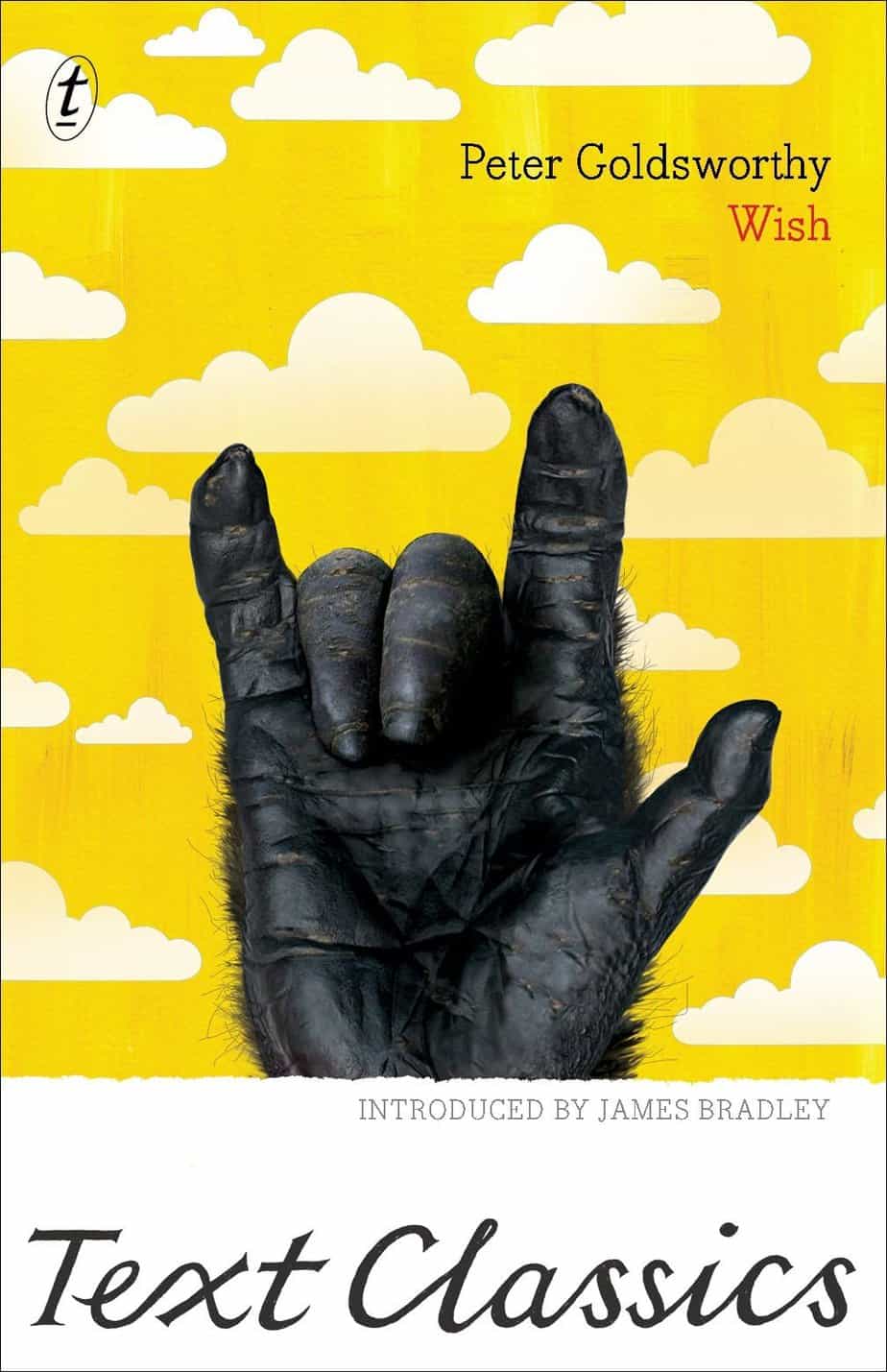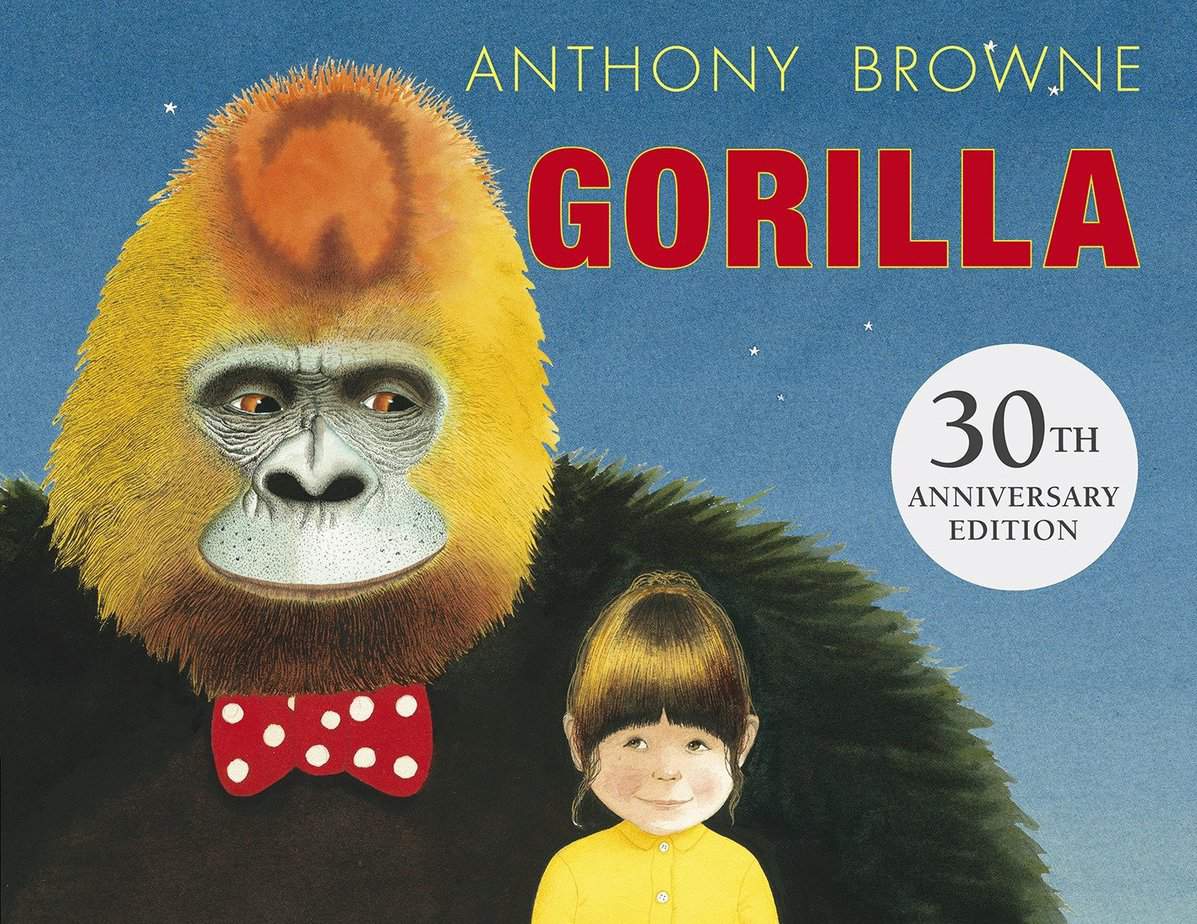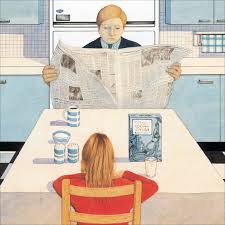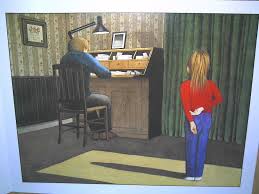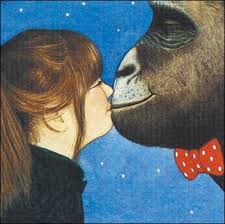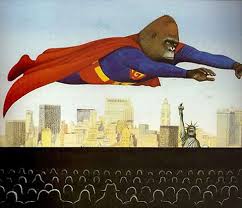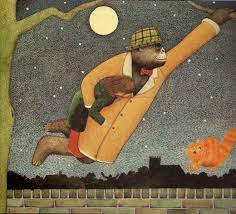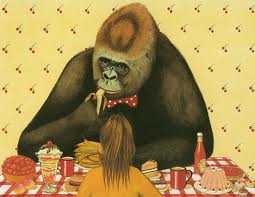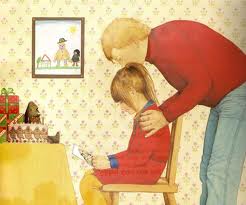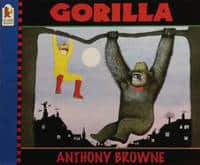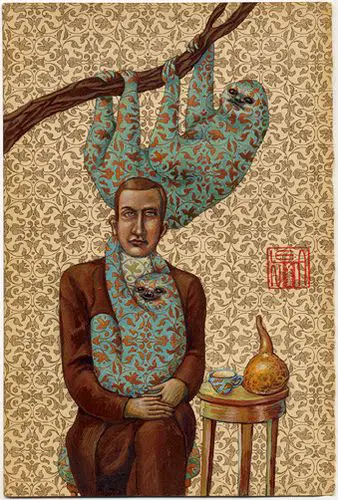Gorilla is the book that made Anthony Browne’s name as a creator of postmodern picture books. It was awarded the Kurt Maschler Award (1982-1999), which specifically rewarded British picture books demonstrating excellent integration between words and pictures.
WHAT HAPPENS IN GORILLA?
A girl called Hannah — about 6 or 7 years old — feels that her father doesn’t spend any time with her. She often wants to do something with him but he is always busy. One day her father gifts her a toy gorilla, as she has a special interest in gorillas, seeing gorilla related things everywhere. That night Hannah dreams she goes on a dream date with her life-sized gorilla, who is now a stand in father figure. He takes her to the zoo and then to a cafe. In the morning we learn that it is her birthday, and her father has a surprise — he is going to take her to the zoo.
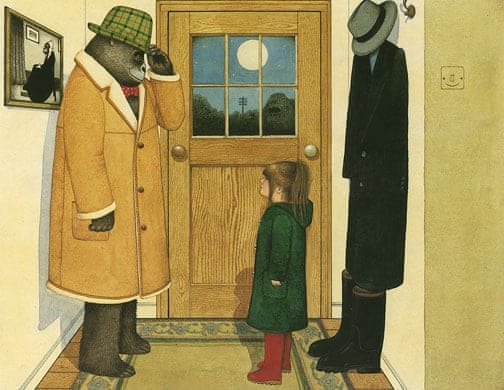
WONDERFULNESS OF GORILLA
There is something wonderfully unsettling about the picture books of Anthony Browne, who is a postmodern picturebook writer/illustrator.
Postmodern picture books are a specific genre of picture books. Characteristics of this unique type of book include non-linear narrative forms in storybooks, books that are “aware” of themselves as books and include self-referential elements, and what is known as metafiction.
Wikipedia (BTW, anyone would think from the Wikipedia write-up that postmodern picture books are created only by men.)
Features of Postmodern Picture Books
- they expand the conventional boundaries of picture book formats
- contain non-linear structures and storylines
- offer multiple perspectives or realities to the reader (in common with Impressionist literature)
- may be self-referential — they discuss their own creation or existence
- contain elements of ambiguity or irony
- often contain surrealistic images
- include the juxtaposition of unrelated images
- mock traditional formats
- are often sarcastic / cynical in tone
- contain overly obtrusive narrators who directly address readers and comment on their own narrations
- often contain narrative framing devices (e.g., stories within stories, characters reading about their own fictional lives)
- feature typographic experimentation
- feature a mixing of genres, discourse styles, and modes of narration
- illustrated with a pastiche of illustrative styles
– Frank Serafini
For more on postmodern picture books see David Beagley’s lecture on iTunes U, or my notes on that, here.
A less well-executed story may have started with something like, “Tomorrow it was Hannah’s birthday…” It is particularly masterful that Anthony Browne withholds this information until the conclusion. Why? Because the brightness associated with birthdays lightens the ending. Since the first part of the book is melancholic, a birthday tone would not fit well.
NOTES ON THE ILLUSTRATION
A feature of Anthony Browne’s work is that although the characters are depicted in almost naturalistic style, “in all styles we can only interpret faces with certainty as positive, negative or neutral in affect, with more subtle readings dependent on contextual and intermodal guidance. (Tian, 2011.)
As is the case in all of Browne’s books, the illustrations contain surreal details which reward the reader for lingering. This is not a page-flipper. A young reader will feel smart, in a Where’s Wally/Spot The Difference kind of way, for picking out what’s strange about each picture.
First, Browne sets up a desire in Hannah: She wants her dad to show her some affection. The reader must emphasise with Hannah and feel some of her isolation and loneliness. Above, the father holds up a newspaper as a wall.
In the image above, the father has his back to his daughter. Hannah’s isolation is emphasised by the rectangle of light coming through an off-stage door. The rectangle forms a border between Hannah and her father. They may as well be in different worlds.
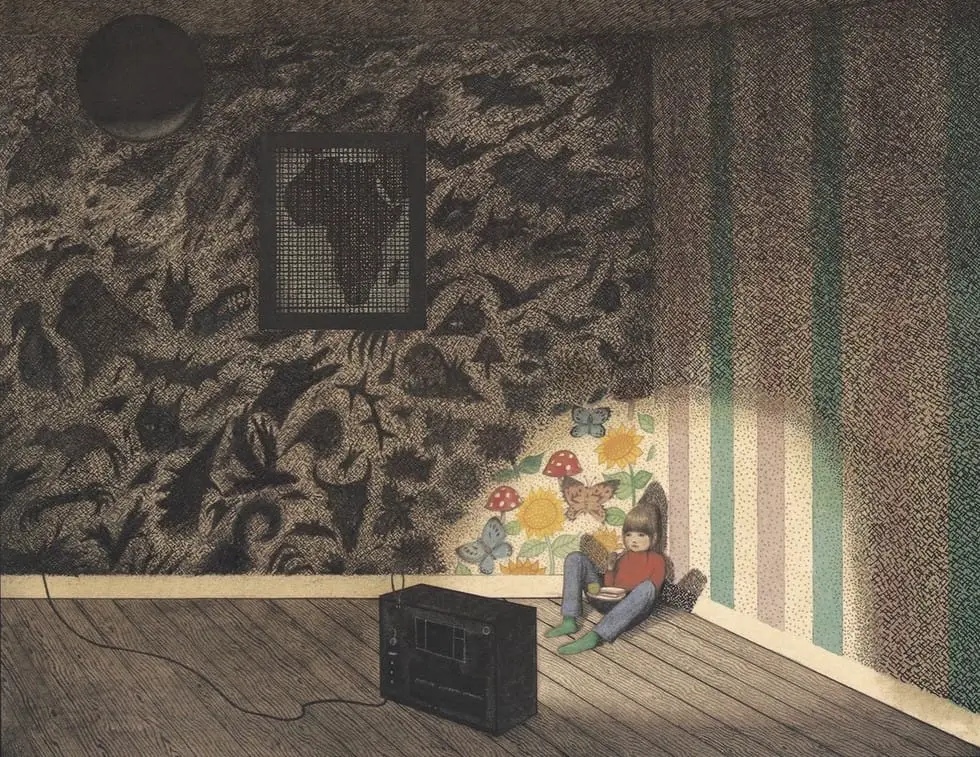
There is no comfort in this house — not even a sofa to sit on, and no carpet. Notice the map of Africa on the wall — a part of Hannah’s imagination. The truly masterful part of this illustration is that the light coming out of the television turns the pattern on the wallpaper into butterflies. The light coming out of the television is Hannah’s only company — her only brightness in an otherwise dark home environment.
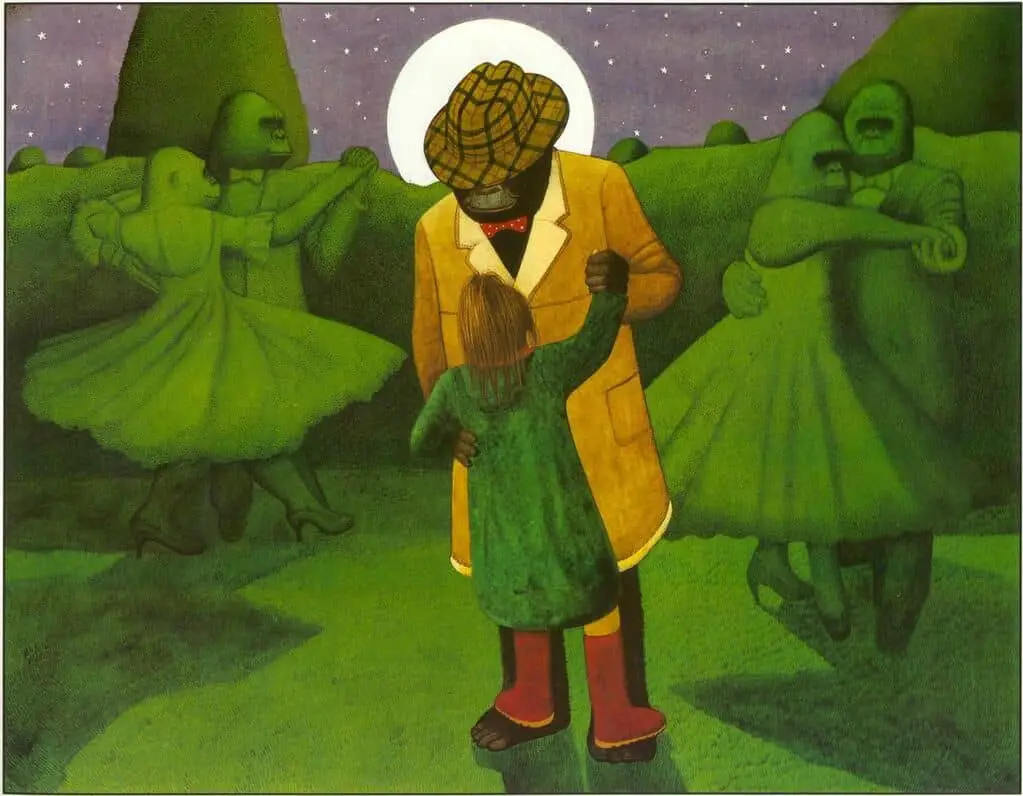
What does it mean when a background merges with the real life of the story?
- The character feels ignored/isolated/lonely, having more in common with the background than with the action going on around her
- The character is retreating into her imagination/dreamscape/fantasy
- The world around the character is not what it first appears, suggesting there’s a hidden depth to everything. Here, the father’s feelings towards Hannah are warmer than initially suggested. (He is redeemed at the end.)
There’s something a little disturbing about this, unless we realise that the gorilla is a fantasy stand-in father.
I must admit there are a few scenes that had me arching my eyebrow at what she was up [to] in the way of questionable behaviour, but the end explains everything nicely.
from a 3 Star Goodreads Review
Superman is the symbol of supreme strength and prowess. This little girl thinks of her father as a superhero. But, like Superman, he is also some glamorous figure who remains out of reach.
The city is a jungle and the jungle is a city. Most stories set in cities have elements of the jungle in them, and vice versa.
Food is immensely important in children’s books. Though there is a bit of a movement towards depicting healthy food in picture books, this is almost impossible to do when the feast takes place inside a child’s imagination, in which case (in the West, at least) it’s almost always cakes and sundaes.
Not seen in this shot, but the father has a banana poking out of his back pocket. There are little details like that which tell the reader visually: “The gorilla IS the dad.” Anthony Browne reuses this trope in his postmodern Hansel and Gretel, in which the mother IS the witch.
The reader (along with Hannah) now learns that Dad really does think about his daughter. He has intuited that Hannah is fascinated with gorillas, and has planned exactly the birthday outing she has been dreaming about. He’s the sort of dad to hang Hannah’s pictures on the wall, framed. The young readers are left with the message that even when they feel that their caregivers don’t care about them, parents actually do love them, no matter what. This is a reassuring story: children will eventually receive the attention they crave.
Of course, terrible caregivers do exist in real life. But they don’t tend to populate picture books. Even in the young adult category, truly terrible parents are extremely rare.
Although very sad at the beginning I found this story to be refreshingly honest and deeply gratifying.
from a 5 Star Goodreads Review
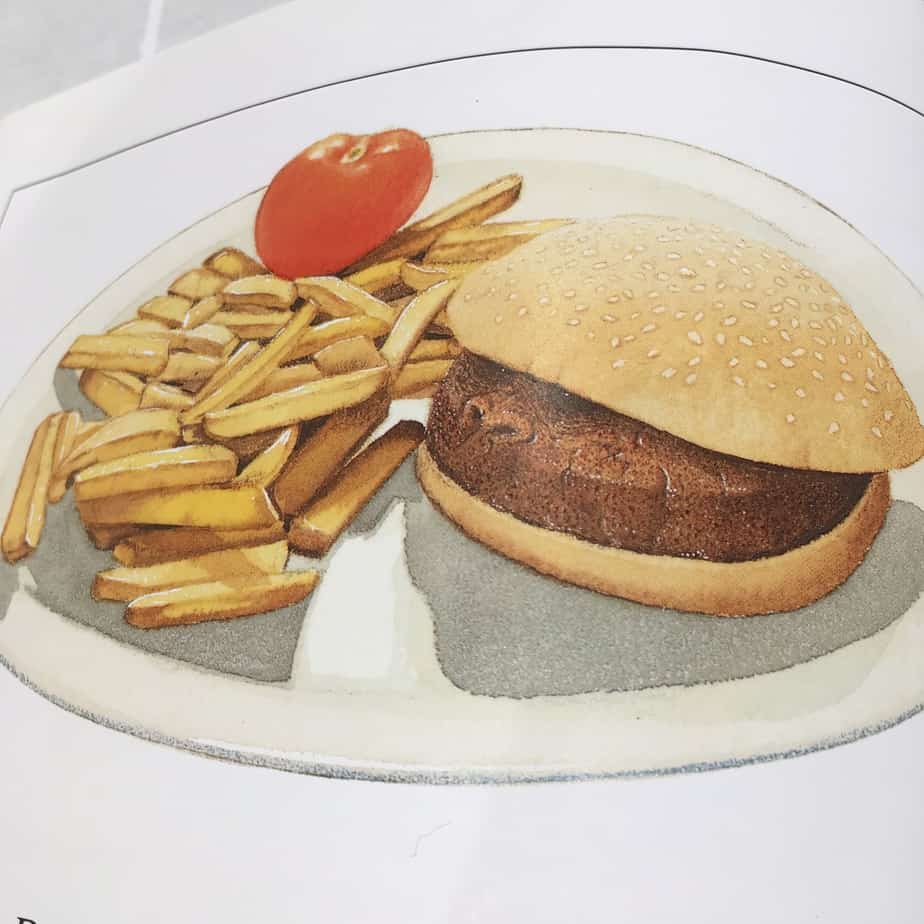
STORY SPECS
Gorilla won a number of significant awards:
There have been a number of reprints with different covers over the years:
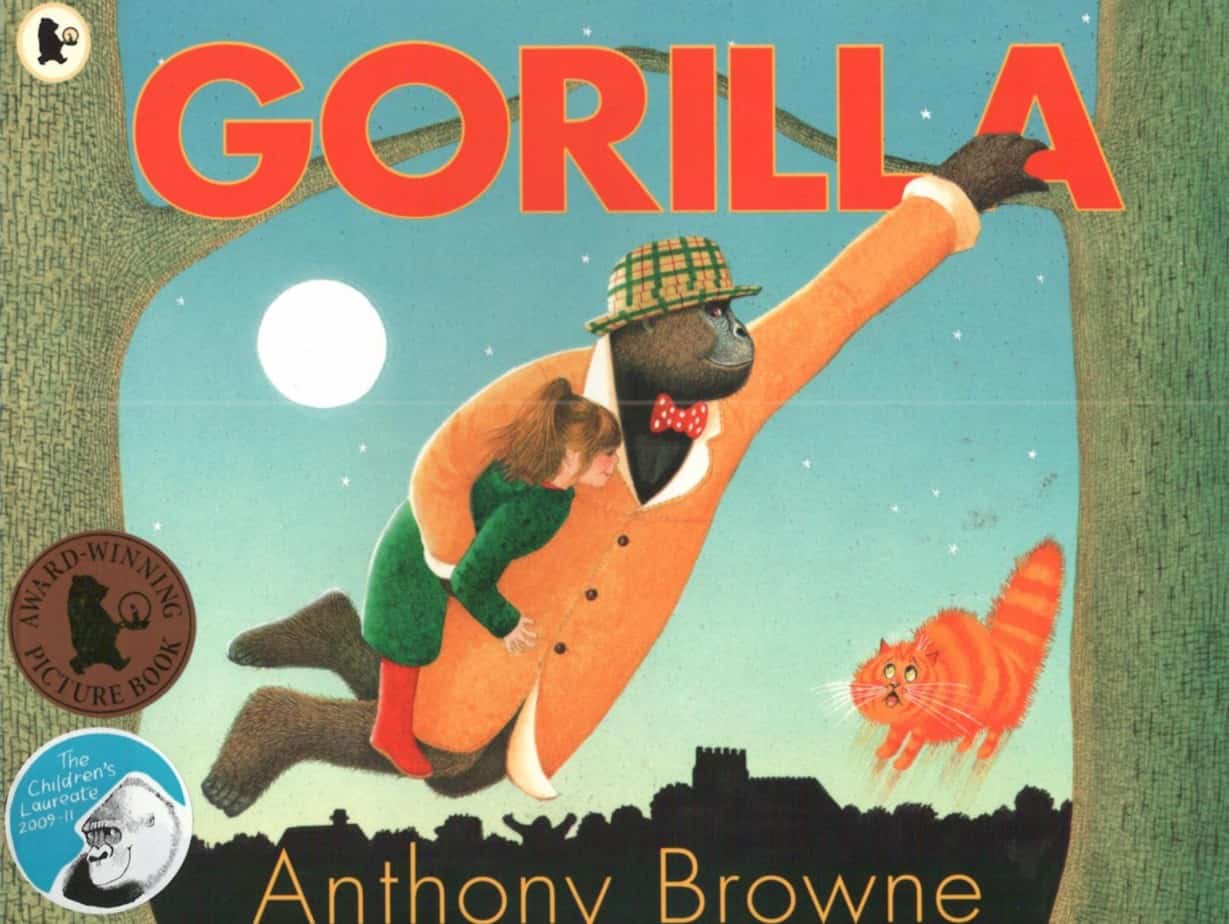
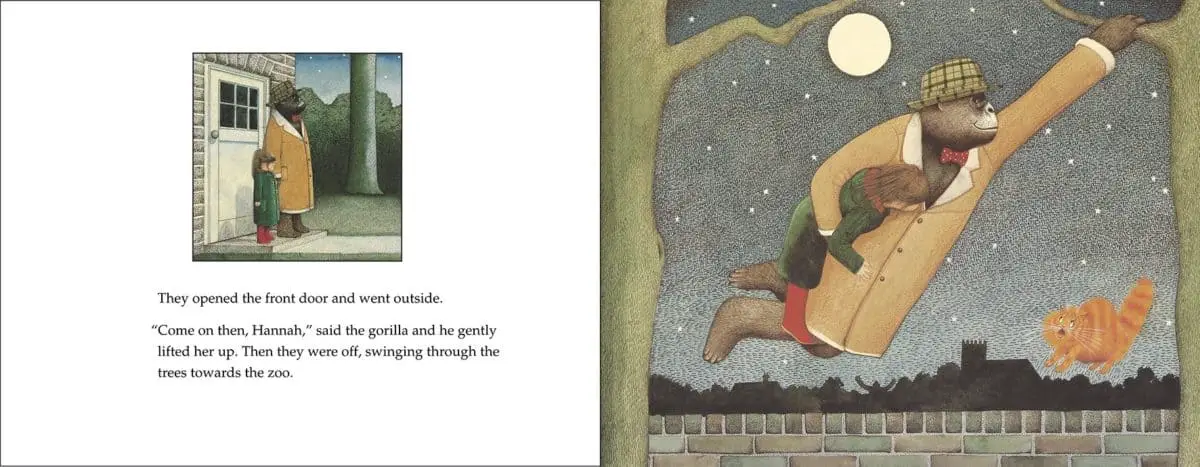
This image with the surprised cat is my six-year-old’s favourite. The expression on the cat is funny to a kid, and is perhaps the one bit of true hilarity in the whole book, which is bitter-sweet and melancholic. Perhaps this is why it was chosen as a front cover image.
This cover makes readily apparent the jungle/city metaphor.
COMPARE WITH
A number of artists merge backgrounds with ‘the real world of the narrative’. Here’s an example:
Gotye blends into the wallpaper in Someone That I Used To Know.
Flight of the Concords had spoofed this earlier, in their song I Told You I Was Freaky.
Other Postmodern Picture Books
- David Macaulay‘s award winning Black and White (1990)
- David Wiesner’s The Three Pigs
- Jon Scieszka and Lane Smith’s The Stinky Cheese Man
- Bamboozled by David Legge
- Shaun Tan and Gary Crew’s The Viewer
- Emily Gravett’s Wolves
- McGuire, R. (1997). What’s Wrong with This Book?
- Burningham, J. (1977). Come Away From the Water, Shirley.
- Watt, M. (2009). Chester.
- Child, L. (2002). Who’s Afraid of the Big Bad Book?
- Ahlberg, A. (1987). The Jolly Postman
- Pretty much all of the other Anthony Browne picture books
- A Goodreads List of Postmodern Picture books
The adult equivalent of a slightly disturbing story about a gorilla’s relationship with a human is Peter Goldsworthy’s Wish (Australian).
